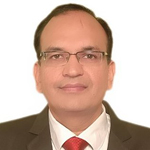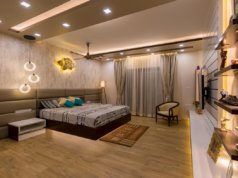[metaslider id=10671]


— Amit Garg, CEO, Indo Simon Electric Pvt. Ltd and Luis Baselga, International Business Director at Simon
Barcelona-based Simon is Europe’s finest switch maker and globally recognised as the ‘King of Switches’. At present, the 100-year old company has operations in 20 countries along with 16 production centres around the world. It has successfully executed several prestigious international projects. The switch maker, known for its innovative and distinctive product designs, entered India in 2007. Amit Garg and Luis Baselga spoke to Debdeep Chakraborty about how the company is in the process of relaunching and redefining itself in the Indian market.
Simon was earlier present in India in partnership with erstwhile Indo Asian Fusegear. Tell us why this collaboration ended and your relaunch in India.
Luis Baselga: We have gone through partners in many countries including China, Poland and Turkey. Some of these partnerships have worked very well. For example, in China, the partnership worked very well because the mentality of our Chinese partner and our company was the same. In China, our objective was to be the leader in the high-end segment. In India, the mentality of Simon and Indo Asian Fusegear did not match. The focus of Indo Asian Fusegear was on the middle and low-end segment whereas our aim was not to be big but lead in the high-end segment.
Amit Garg: We entered India in 2007 and that is how the joint venture started. We initially started manufacturing switches under their brand. The new factory which was 100 per cent independent came in 2009. The business of Indo Asian Fusegear was focused on the low-end segment as well as the project segment, which is more like a commodity business. For us, switch is not a commodity. We feel that the way of selling a switch is completely different from the way of selling cable. In case of switch, dealer network needs to be created and considerable secondary sales and ground level work are involved.
When we started in 2009, we had even brought our home automation complete range into India and launched it in the Indian market but somehow the trust level could not build up. Eventually, in 2011, the joint venture partner sold the business to our main competitor in the world which was a big surprise to us. From 2011 onwards, the entire business was being handled by the same team that ran the cable business and there was no separate focus on selling of switches or promoting the Simon brand. The entire focus was turned towards developing the new company EON. Their business model is not focused on the premium segment.
Luis Baselga: It is a good way to do business but different from the way Simon operates. We are not in the mass market.
Amit Garg: We are in two segments – retail segment and project segment. In the retail segment, electricians are the main influencers. Therefore, these people have to be made aware of the products as well as their benefits. This is done through organising meets and marketing activities. In the project segment, the architects are the main influencers. To get into the minds of architects takes a long time. It needs to be kept in mind that changing perception takes time.
Officially, the joint venture ended in September last year. Since March last year, we have been operating independently and trying to build our business. Last August, we moved into our new corporate office in Noida Expressway. Unfortunately, in the last four-five years, we could not build the strong values that Simon stands for. That has changed now. We are now connecting to the market and focusing on ground level working with the electricians and architects. We have invested in a centre of excellence in Noida and focusing on building a long-term roadmap for India. We may eventually end up helping our global team in various markets.
The entire energy market has changed now. We see opportunity in the market here as well as a lot of strength in our brand. Very few companies can claim a 100-year legacy. We are now directly talking to our customers about Simon. Gradually, we are changing the perception that had been created in the last few years. We are in the process of relaunching with the objective of giving the message that we are now direct, nothing to do with our past, and controlled 100 per cent by Barcelona, Spain. We are also coming out with new ranges and getting total support for it from Spain. One range will be launched in a couple of months’ time and other ranges will follow. That is our product roadmap for the next three years.
Simon is targeting the premium switches market. Tell us more on how you perceive demand from India.
Luis Baselga: Markets around the world are different. India has a huge middle class. Till recently, the interest was in medium class products in India. We see that trend changing. People are now opting for either high-end products or low-end products. Customers are now focusing more on value addition in products.
Amit Garg: From the market that we are seeing, people have money and they want smart switches. In the future, switches are going to become a style statement. People don’t want to depend only on the electricians for switches. If someone is investing Rs.1 or 2 crore on a villa, the cost of switches is not that big. Till recently, it was the electrician who was taking the decision. Now, the owners or their wives are involved in selecting the switches. This is a high profit sector, and therefore, everybody wants to come into this sector.
The profitability that we see in switches does not exist either in cables, switchgears or transformers. We find that all cable manufacturers are coming into the switch business but their products do not have much differentiation. They are just on and off switches.
Going forward, we see consolidation happening. Only companies that are able to add value and whose products are able to differentiate themselves from products of other companies will be able to survive in the long term in India. It is during this phase that we will play a major role with our global expertise and investments. In India, we would like to be known as a serious player rather than a big player with high volumes.
Simon switches have many innovative features like screw-less fitting and completely modular design. Do you think the Indian market will be receptive to such innovative features?
Amit Garg: It depends on what kind of engagement you have with the electricians. Definitely, changing the mindset is difficult. In switches, people look for things like aesthetics, mechanism and color options. Many a times, people don’t have options available and buy whatever is available in the market. We need to educate the customers and also the influencers like electricians and architects about our unique ranges, the features and color options of our switches. A lot depends on how well we do the marketing and our ability to convince customers.
India is widely believed to be a big but difficult market. There are hundreds of brands for switches available at different price points. How difficult is it to compete in such a market?
Amit Garg: It depends on the playground and the segment in which the manufacturer wants to be in. If the manufacturer of a switch that is just on and off without any differentiators wants to be in the big segment, then a strong brand and distribution network is necessary, or the focus needs to be very strongly on projects. We don’t want to play directly in this segment. It is very important for us to communicate to the market the benefits of our products.
Sometimes, we are giving better products but even then our sales people are unable to communicate this to the customers because of the prevailing mindset. We are facing that challenge. So, we are now giving a lot of training to our in-house sales team to educate them about the benefits of our products who in turn will communicate it to the market.
We are also meeting with electricians at various levels. At one level, we call 20-25 electricians to a hotel and give them practical presentation and live demonstration. During these meets, we talk about the benefits of our products, show them live installations and provide solutions to the practical problems that they face. All this is done in their language. These meets have helped us a lot. Now electricians know that we are in the market and they are speaking well about us. At the other level, the electricians are called to the retail counter and told about the benefits that we are providing. We also talk about the commercial part since in retail it is very important to motivate the electricians commercially. So, we are trying to engage the electricians at various levels and influence them in a positive way.
We understand that Simon was also to launch LED lighting systems in India. What is the current status?
Amit Garg: Right now, in India, we are focusing on switches and the lighting automation part since that is our strength. We have to move forward step by step. What we have done initially is install our entire office with LED lighting from Spain. We have got very positive response from architects. Definitely, we have plans for the near future to come out with a strategy for adding value to the top segment since it is a high-end product. It is a product that cannot be sold through the distributor and has to go through architects.
At present, Simon has a manufacturing facility in Haridwar, Uttarakhand. Do you intend to set up any more manufacturing facilities in India in the medium term?
Amit Garg: Not now. The plant that we have is a dedicated plant for switches but we have extra capacity at present. As a strategy, we have decided to grow slow. Currently, we are not pan India. We were pan India when we entered India along with Indo Asian Fusegear but then we faced a lot of local issues where we could not serve the customers. Our entire focus this year will be on the north Indian market to establish ourselves well. Eventually, we aspire to grow not only pan India but also in the sub-continent but we are not in a hurry and it will be step by step. We want to grow the right way.
How do you view the government’s ‘Make in India’ campaign?
Luis Baselga: We are already manufacturing here. We now have plant capacities in China and Spain for LED. We believe that if we want to be serious in the Indian market, we have to produce in India. All the products that we sell in India are manufactured in India. But I must state that manufacturing is not important for us. What is important for us is designing, and designing the right solutions. The center of excellence in India is a step in that direction. For us, it is very important that we create value for customers in India.
Amit Garg: Eventually, manufacturing will be the outcome. We are very clear that if we have to develop the product here, it has to be cost competitive. So, something may be designed in Barcelona but the final product will be manufactured in India. India has the same competitiveness as China. Therefore, we would like to do more manufacturing in India and take advantage of our Indian set up. If the ‘Make in India’ initiative can help us, we would definitely like to take that help.
The Indian government’s smart cities initiative will create huge opportunities for companies like Simon. What is your strategy for capitalising on those opportunities?
Amit Garg: It is definitely on our radar. Barcelona has already been declared as a smart city. Spain recently proposed to assist in developing Delhi as a smart city. We are in touch with authorities in Spain on how we can be a part of this initiative. Developing smart cities take time. By the time things actually take shape, we will be firmly established here. We will need to set up a specialised team for focusing on the smart cities project as we grow and as opportunities come up.











